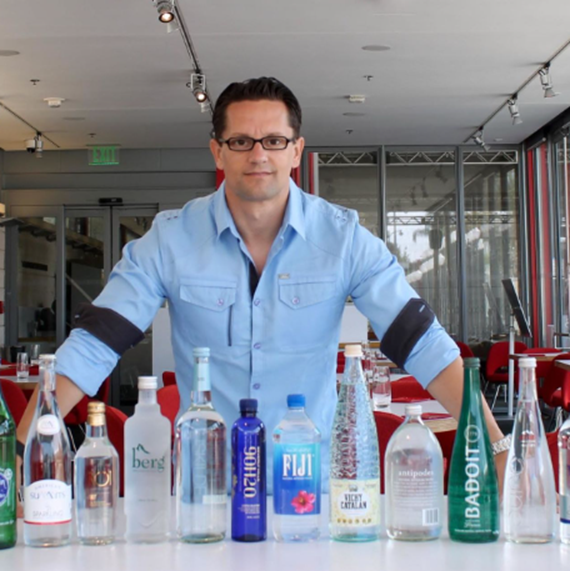Water is abundant. It covers 71% of the planet – after all, but it can be hard to believe that this simple three-atom molecule holds so much significance. This natural element allows us to survive and it’s impossible to imagine a world without this substance that’s fundamental to our existence. Water sommelier Candice Jansen takes us on a journey to understand the importance of water and the role she plays as a water sommelier.
The role of a water sommelier
A water sommelier is a trained professional, who specializes in the art of water appreciation and expertise. Much like a wine sommelier, a water sommelier possesses extensive knowledge of different types of water and their properties, including taste, origins and the best ways to pair them with food and beverages.
“We have a deep understanding of water terroir, mineral composition, filtration methods and the impact of water on sensory experiences.” Says Candice. Every water sommelier contributes their unique roles and qualities to the realm of water appreciation. “Personally, I am an advocate for emphasising the significance and value of water. Numerous individuals have enquired about the weight of my role in the future of water and my response remains consistent: water has an economic price tag, whether it comes from the tap or occurs naturally; its emotional value often goes unnoticed,” she says. Candice’s purpose and passion lies in attributing value to water. This molecule is frequently under-valued, despite its intriguing intricacies, including aspects such as taste and mineral composition, so Candice’s role holds immense significance in driving the necessary change in attitude towards water.
Water is life
Water is responsible for healthy lives, hydration and food production, among other things. Water can come from many different sources and these sources hold different qualities, tastes, nuances and even uses.
Water tasting like a pro
There’s wine, brandy and beer tasting, but did you know there is also water tasting? “Water tasting begins by immersing participants in the fascinating world of water. We explore how water acquires its taste, delve into the mysteries surrounding this essential resource, and discover ways to develop a genuine fondness for water,” says Candice. During the tasting, tasters are given six distinct waters, each with its own captivating story. “Throughout the event, we engage in conversations that cover a range of topics, including pH levels, the nuances between bottled and processed waters, the significance of minerals, comparisons with other beverages and the safe and effective use of tap water,” she says. By the end of the experience, participants leave with a newfound appreciation and a transformed perspective on water, having gone on a unique and incredible journey of exploration. Candice uses a dedicated stemmed water glass to elevate the experience of drinking water, giving it the same value and appreciation as wine. “This transforms it into an immersive and enjoyable experience rather than merely a means of hydration,” she adds.
The correct way to drink water
Water should be savoured in the way that pleases you best! “To determine your taste preferences, we begin by sampling water at room temperature. Once you’ve identified a few favourites, you can choose to enjoy them chilled or at room temperature, depending on your personal preference,” she says. It’s important not to dilute the water with ice from another source.
Candice explains that the distinct
qualities of water are derived from its natural environment, a concept referred
to as terroir. Factors, such as the type of rock formations, the duration of
filtration and the mineral composition, contribute to the variations of taste
in water. “The impact of climate change poses significant challenges to both
the availability and potability of water. Additionally, climate change has
numerous effects that can impact the quality of water,” she says.
Pairing water with a meal
Pairing water with food and wine involves specific techniques. “High-mineral waters are often paired with robust red wines, while lower mineral waters tend to complement white wines better. Sparkling water is typically not paired with any wine, except for dessert wines and effervescent water,” says Candice. The possibilities for combinations are endless and thrilling.
Water selection for food is based on the
flavour profiles of both the dish and the water, as well as considering the
characteristics of the wine being served. “Water menus have emerged as a rising
trend in the hospitality industry, offering a wide range of water choices to
enhance the overall epicurean experience. This allows diners to explore diverse
options and elevate their culinary journey by choosing the perfect water to
accompany their meals and complement the flavours and aromas of the food and
wine,” says Candice.
Why shouldn’t you add lemon to water?
Candice says that both lemons and water are very healthy. However, they don’t belong together. “Lemons have been added to water to disguise the poor taste of some water. But when you learn that water has a unique taste and mineral complexity, you’ll also learn that lemons aren’t necessary and they destroy the taste of water,” she says.







